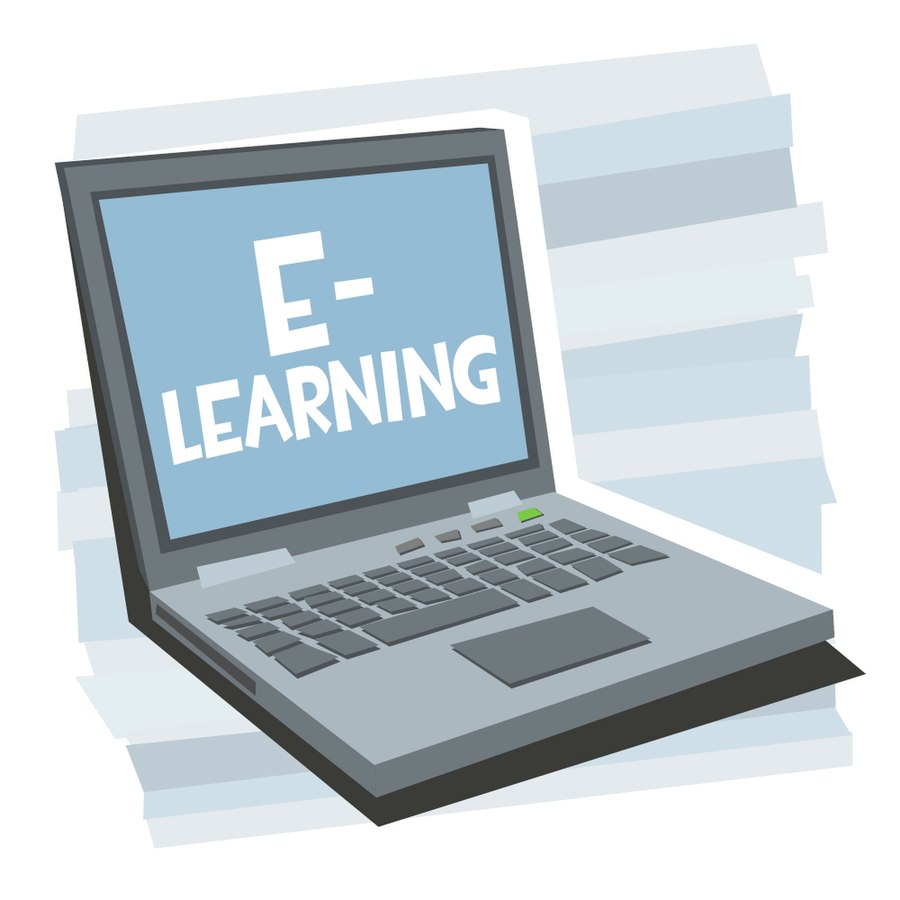E-öğrenme, 1990'ların başındaki tanıtımından bu yana önemli değişiklikler geçirdi. E-öğrenmenin çeşitli tanımları olmasına rağmen genel olarak elektronik araçlarla gerçekleşen her türlü öğrenmeyi ifade etmektedir.
E-öğrenmenin tarihini inceleyelim ve bazı önemli kilometre taşlarını vurgulayalım. Ek olarak faydalarını ve üretkenliği ve öğrenme sonuçlarını nasıl artırabileceğini tartışacağız.
Başlangıçta, e-öğrenme öncelikle askeri personeli eğitmek için kullanıldı, ancak yıllar geçtikçe gelişti.
E-öğrenme artık öğrencilere ve çalışanlara yeni beceriler öğretmek için dünya çapındaki işletmelerde ve okullarda yaygın olarak kullanılmaktadır.
E-öğrenmenin tarihini ve gelişimini keşfedin ve modern bir eğitim aracı olarak önemini tartışın.
E-Öğrenimin Tarihçesi: e-Öğrenimin Girişi
E-öğrenme, bilgiye ve eğitime erişmenin yeni bir yolu olarak son yirmi yılda popülerlik kazanmıştır.
However, its history can be traced back to 1728, when Juan Luis Vives, a Spanish historian and philosopher, advocated for the use of technology in education, specifically printing presses, to share knowledge.
19. yüzyılın sonlarında Sir Isaac Pitman, basılı dersler kullanılarak öğrenilebilecek bir steno sistemi geliştirdi. Dünyanın ilk yazışma okulu olan Ulusal Yazışma Okulu, 1892'de Birleşik Krallık'ta açıldı.
In the 20th century, e-learning evolved rapidly–the first radio school opened in Austria in 1924, and television-based distance learning courses followed in the 1950s.
İnternet, e-öğrenmede devrim yaratarak dünyanın her yerindeki herkesin bilgiye ve eğitime erişmesini mümkün kıldı.
Phoenix Üniversitesi ilk çevrimiçi kursu 1992 yılında oluşturdu ve o zamandan beri e-öğrenme okullarda, üniversitelerde, işletmelerde ve devlet kuruluşlarında kullanılıyor.
E-learning is a flexible, convenient, and cost-effective way to learn, and its popularity will continue to grow in the future.
Timeline of Historical Events in E-Learning:
The late 1990s saw the birth of e-learning as we know it today.
The first online courses began appearing, and the field of educational technology was born. Since then, e-learning has undergone tremendous growth and transformation.
E-learning has existed for centuries, in different forms and for different purposes. Its history can be traced back to the early days of distance learning, which began in the mid-19th century.
E-learning has evolved over the years, and its use has become more widespread as technology has advanced. Here is a timeline of some of the most important events in the history of e-learning:
1837: The world’s first distance learning institution, the Boston Athenaeum, begins offering courses by mail.
1850: The University of London becomes the first university to offer degree programs by correspondence.
1890: The University of Chicago becomes the first university to offer courses via the newly invented telephone.
1920: Radio broadcasting is used for educational purposes for the first time in the United States.
1930: The first televised college course is broadcast in the UK.
1950: Audio-visual aids such as film strips and projectors are increasingly used in classrooms.
1960: Computers were introduced into classrooms, and universities began offering computer-based courses.
1970: The first online courses are offered by the University of Massachusetts and Stanford University.
1980: The number of colleges and universities offering distance learning programs increases dramatically.
1990: Online learning becomes more widespread with the advent of the World Wide Web.
2000: E-learning continues to grow in popularity, with more and more institutions offering online courses and degree programs.
2010: Mobile learning becomes increasingly popular as students use smartphones and tablets to access course content.
2020: E-learning is now commonplace, with many schools and universities offering all or most of their courses online.
E-Öğrenim için Sırada Ne Var?
It’s no secret that e-learning has exploded in popularity in recent years.
According to a report by MarketsandMarkets, the global e-learning market is expected to reach $325 billion by 2025, up from $190 billion in 2020.
This growth is being driven by several factors, including the increasing availability of high-speed internet, the proliferation of mobile devices, and the growing popularity of online courses and MOOCs.
As e-learning continues to grow in popularity, it’s important to stay up-to-date on the latest trends and developments.
Four Key Trends That Experts Say Will Shape the Future Of e-Learning:
1. Increased Personalization
One of the biggest trends in e-learning is the move towards personalization. In the past, online courses were often one-size-fits-all affairs, with little to no customization or adjustment for individual learners.
However, new technologies are making it possible to create more personalized Öğrenme deneyimleri.
2. Greater Use of Gamification
Gamification is another trend that is gaining popularity in the e-learning world. Gamification is the process of using game mechanics and elements to encourage engagement and motivation.
For example, learners might be given points, badges, or levels as they progress through a course.
3. More Collaborative Learning
Another trend that is geleceği şekillendirmek of e-learning is the move towards collaborative learning. Collaborative learning is a type of learning where students work together to complete a task or solve a problem.
This trend is being driven by the growing popularity of online collaboration tools, such as Google Docs and Skype.
4. Increased Use of Mobile Devices
Finally, the increased use of mobile devices is also shaping the future of e-learning. More and more learners are using their smartphones and tablets to access online courses and learning materials.
As a result, there is a growing demand for mobile-friendly e-learning content and course design.
These are just a few of the trends that experts say will shape the future of e-learning. As e-learning continues to grow in popularity, it’s important to stay up-to-date on the latest developments.
By understanding these trends, you’ll be better positioned to create engaging and effective online learning experiences for your students.
FAQs
🤔 What is the history of e-learning?
E-learning has existed for centuries, with the first recorded use of the term dating back to 1728. The concept of online learning has evolved significantly over the years, and today, it is a widely used educational tool that helps students learn in various ways.
🔥 How did e-learning develop?
The history of e-learning is fascinating, and it has evolved significantly over the years. Early forms of e-learning were based on simple text-based learning materials. Still, today’s e-learning platforms are much more sophisticated and offer a variety of features and tools that facilitate learning.
🚀 Who developed e-learning?
E-learning was developed by a variety of individuals and organizations over the years. Early pioneers in the field include John Dewey, Ivan Illich, and Seymour Papert. Today, some many different companies and organizations develop e-learning platforms and materials.
✅ What is the future of e-learning?
E-öğrenmenin geleceği parlak ve popülaritesinin artmaya devam etmesi bekleniyor. E-öğrenme daha kişiselleştirilmiş ve uyarlanabilir hale gelecek ve öğrenme deneyimini daha da geliştirecek yeni teknolojiler ortaya çıkacak. Ek olarak, e-öğrenme daha erişilebilir ve uygun maliyetli hale gelecek ve bu da onu dünya çapında daha fazla insan için uygun bir seçenek haline getirecektir.
Hızlı Linkler:
- Öğretilebilir Kupon Kodları
- Öğretilebilir Ücretsiz Deneme
- Udacity İncelemesi
- Coursera İnceleme Çevrimiçi
- LearnDash İncelemesi
- Rosetta Taş İnceleme
- En İyi Çevrimiçi Öğrenme Platformları
- Memrise vs LingoDeer
- Yapay Zeka ve Makine Öğrenimi ve Derin Öğrenme
Conclusion: History of e-Learning
E-Learning’s history is a story of incredible growth, moving from simple correspondence courses to dynamic online platforms that cater to diverse learning needs.
This digital revolution in education has made it possible for anyone with internet access to gain knowledge, skills, and qualifications at their own pace and convenience.
As e-Learning continues to evolve, it promises to further democratize education, breaking down traditional barriers and creating a more inclusive, accessible future for learners worldwide.





